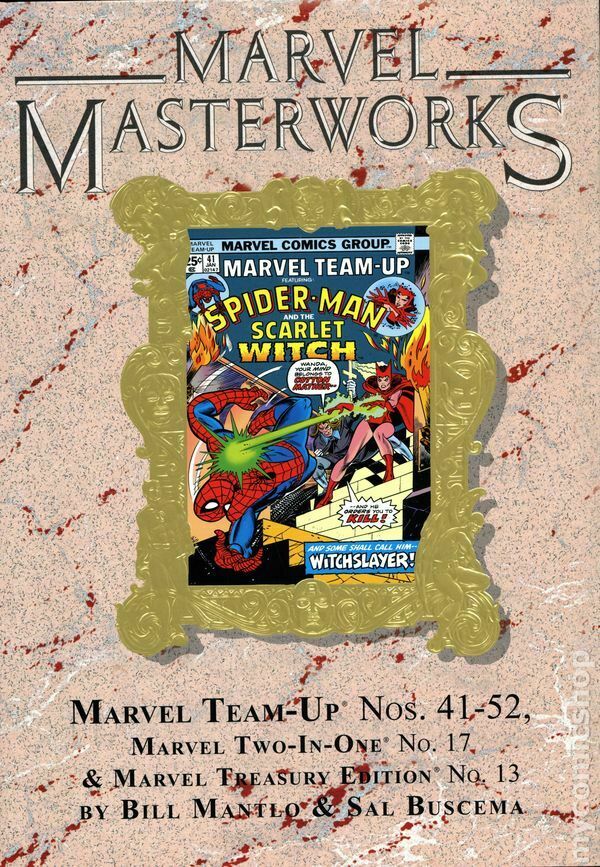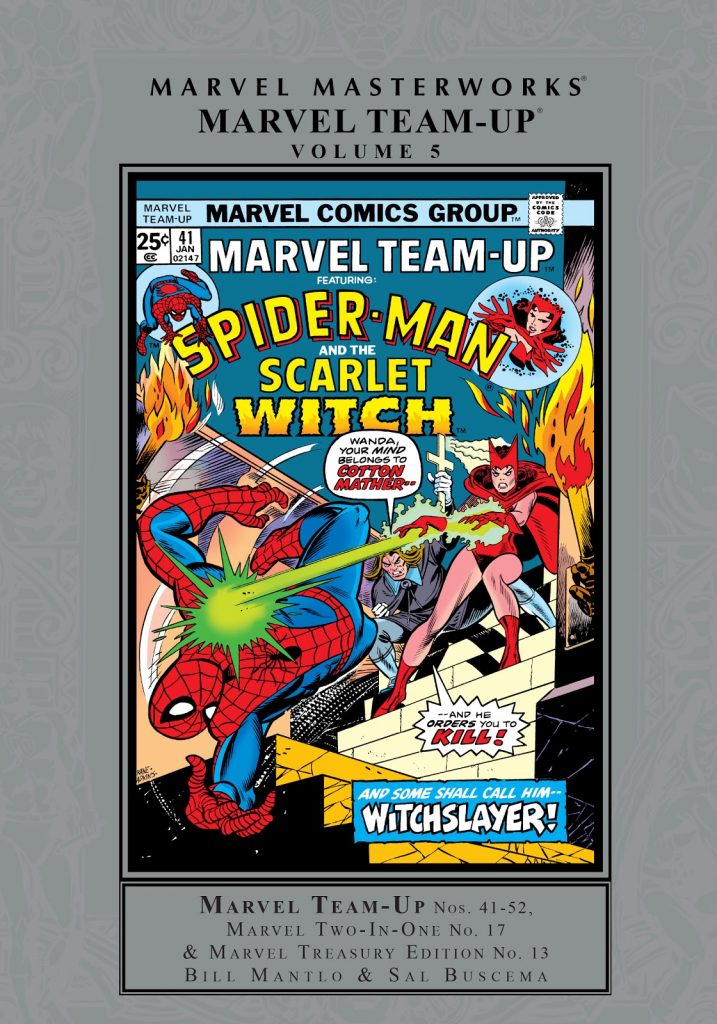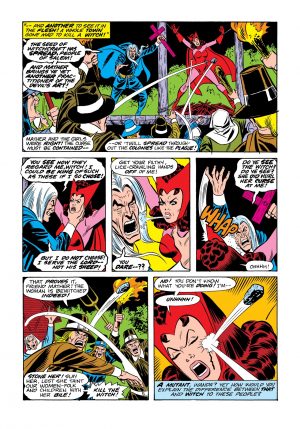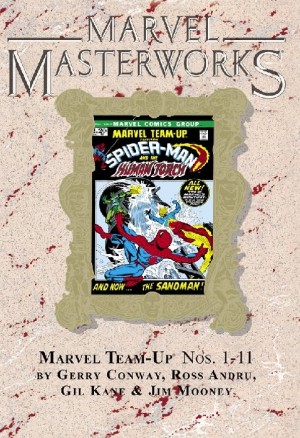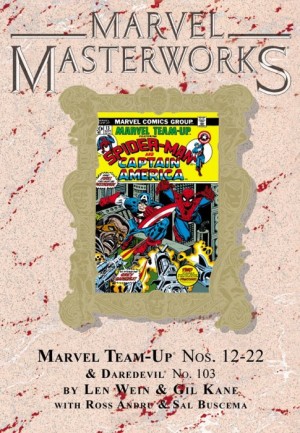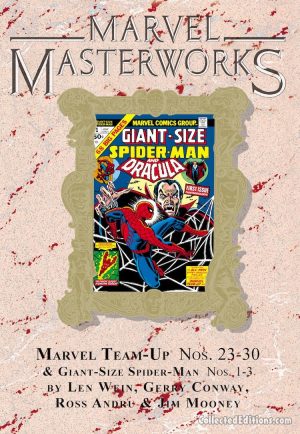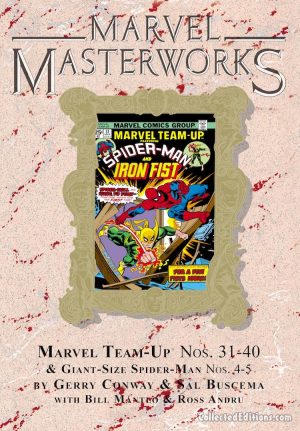Review by Frank Plowright
Over the previous four volumes collecting the 1970s Marvel Team-Up series quality has been rare, fleeting, and mostly artistic. However, there was a spark of interest to close Volume 4. Bill Mantlo as writer brings an enthusiasm notably absent before. His bombastic and explanatory dialogue tends to distract from his better plotting, which benefits from not having to feature the Human Torch every third chapter.
Mantlo’s ambition is on show over the opening four part story, taking Spider-Man, the Scarlet Witch, and ultimately others back to the witch-hunting Salem of the 1690s. It’s notable for not featuring commonplace guest stars, a Mantlo characteristic, providing those guest stars with more logical reasons for appearing, and for using an interesting, if shameful, historical incident. While shaped to include superheroes, the broad basis of what we know about Salem’s witch trials features, and Mantlo counterpoints the superheroic action with the desperate plight of those targeted by Cotton Mather. The dialogue is of the era, but the plot still holds up, building toward a brave ending that many other writers would have avoided. It also features the attractive art combination of Mike Esposito inking Sal Buscema’s pencils, grace and power on display, and as seen on the sample page, they draw a notably lunatic Mather.
Spider-Man’s subsequent trips to the future are a logical continuation, but while it’s nice to see Killraven and Deathlok in their pomp, these are more ordinary stories, although Spider-Man’s shock at what the future holds is established well. Another ordinary tale follows, a two part teaming with the Thing featuring the woeful Basilisk as villain (see Volume 2).
There’s a return to form for Mantlo’s final multi-part story, which introduces an interesting villain in the Wraith, and police captain Jean DeWolff, who’d prove a great Spider-Man supporting character in the 1980s. The mystery is good, the solution is good, the use of guest stars is good, and there’s a whimsically amusing ending. Gerry Conway’s return teaming Spider-Man with Captain America and the Falcon has none of that.
A strange, but welcome inclusion is the entire 1976 Marvel calender. A bicentennial theme is well used by the artists, and it’s nice to see pictures of the 1970s Marvel staff. Notable pin-ups include Herb Trimpe’s opening Hulk, a Joe Sinnott Fantastic Four illustration, and Frank Brunner’s take on Marvel’s mystical and horror characters. Also among the bonus material is Roger Stern and George Tuska’s Christmas story taking a brief glimpse at pretty well every Marvel hero of the era. Fitting them all in is an achievement, but it’s otherwise ordinary.
This is the first Marvel Team-Up Masterworks volume raising the quality level to average overall, but better is to come in Volume 6. If you just want to read the stories and aren’t as concerned about presentation, all but the bonus material can be found in Essential Marvel Team-Up Vol. 2, but in black and white.
